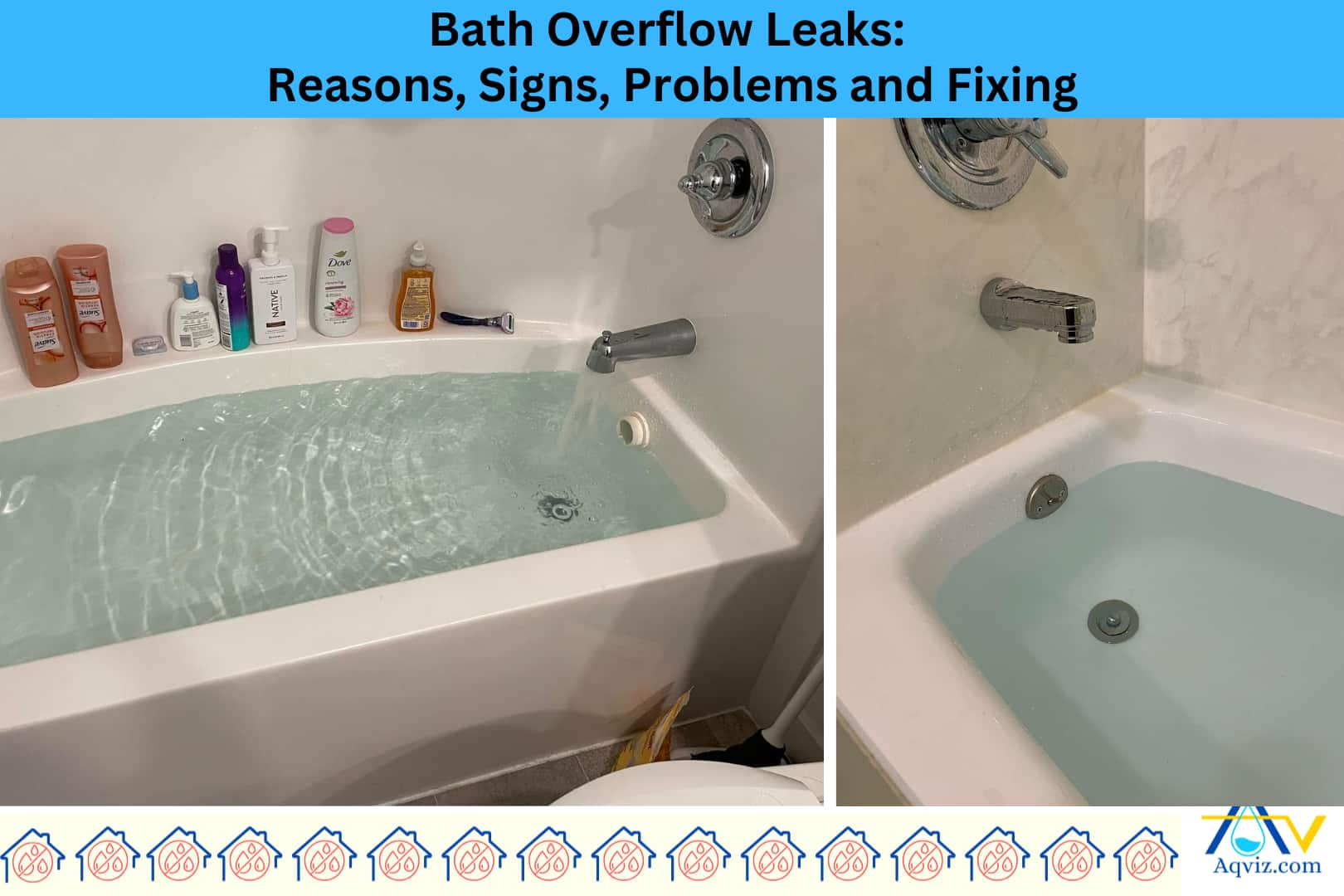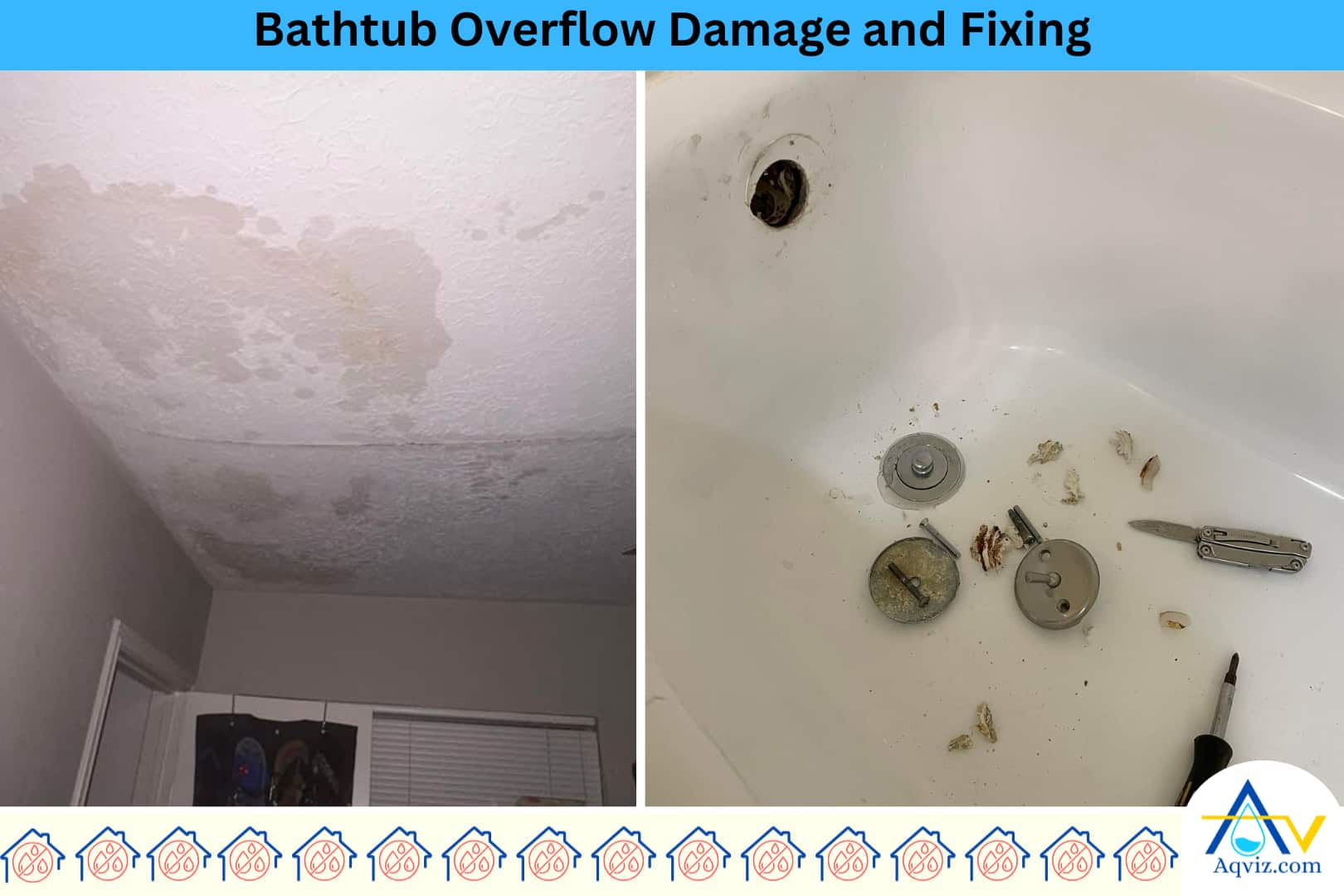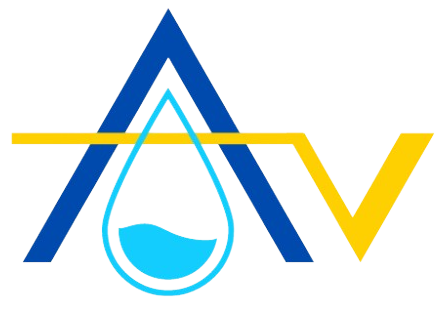Bathtub Overflow Leak: Reasons, Signs, Problems, and How to Fix

A bathtub overflow leak is water escaping from the overflow drain assembly. Bathtub overflow leaks occur due to these reasons, such as deteriorated overflow gasket, loose overflow pipe connection, improper drain alignment, excessive water pressure, and old or cracked overflow plates.
When there is a leak from the bathtub overflow drain, you can detect it by water stains on the ceiling below, a dripping sound after using, visible rust or staining on the overflow plate, and a musty odor near the bathtub.
A prolonged bathtub overflow leak causes hidden wall damage, ceiling staining, mold growth, fixture deterioration, and foul odor buildup. Persistent overflow leakage affects the structural safety and air quality of the bathroom and nearby rooms.
To minimize this negative impact, the bathtub area should be waterproofed using a waterproofing membrane. If you observe there is an overflow leak, you should repair it. Aqviz experts have prepared a complete guide to repair this problem with the help of our plumbing team. If you have any problem with this, please contact Aqviz support.

What is a Bathtub Overflow Leak?
A bathtub overflow leak is water escaping from the overflow drain assembly. Bathtub overflow leaks occur due to these reasons, such as deteriorated overflow gasket, loose overflow pipe connection, improper drain alignment, excessive water pressure, and old or cracked overflow plates. These leaks cause serious water damage, including mold and mildew growth, wood damage, and material deterioration to the structure.
Aqviz experts recommend resealing the overflow gasket with plumber’s putty or neoprene washers, and waterproofing the bathtub area using liquid membranes and flexible sealants behind and around the overflow system. These measures prevent hidden water damage caused by a bathtub overflow leak.
Read More About: Bathroom Waterproofing: Everything You Should Know
What are the 5 Reasons for Bathtub Overflow Leaks?
There are 5 reasons for bathtub overflow leaks, including a deteriorated overflow gasket, loose overflow pipe connection, improper drain alignment, excessive water pressure, and old or cracked overflow plates.
- Deteriorated overflow gasket : The overflow gasket can dry out, harden, or crack over time This allowing water to leak into the wall cavity every time water hits the overflow.
- Loose overflow pipe connection : The overflow pipe connection can loosen due to vibration or poor installation. This causes the water to escape at the connection point during overflows or heavy use.
- Improper drain alignment : If the tub drain assembly and overflow pipe are not properly aligned, it can cause leaks behind the tub, especially where the two pipes join at the waste tee.
- Excessive water pressure : When there is a higher water pressure, water can leak through small gaps around the overflow plate.
- Old or cracked overflow plates : An aging or corroded overflow cover plate can warp or crack, compromising the seal. This lets water trickle through the mounting screws and behind the tub wall, often causing hidden mold or floor damage.
How to Detect a Bathtub Overflow Leak?
You can detect a bathtub overflow leak by water stains on the ceiling below, a dripping sound after using, visible rust or staining on the overflow plate, and a musty odor near the bathtub.
- Water stains on ceiling below : If you observe yellowish or brown stains forming on the ceiling directly below the bathtub, it is strong evidence that water is leaking from the overflow drain and seeping through structural layers.
- Dripping sound after use : When you hear a faint dripping noise inside the wall cavity or from below the tub after draining water, it signals a loose overflow pipe connection or a failed gasket.
- Visible rust or staining on overflow plate : When you observe rust marks, corrosion, or water trails around the overflow trim, evidence that water has been consistently leaking past the gasket and around the plate.
- Musty odor near bathtub : If you smell a stale or damp odor coming from the tub surround or wall opening, it is a strong indicator of hidden moisture buildup caused by a leaking overflow fitting.
What are the Problems of Bathtub Overflow Leak?
There are 5 problems due to bathtub overflow leaks, such as hidden wall damage, ceiling staining, mold growth, fixture deterioration, and foul odor buildup. Persistent overflow leakage affects the structural safety and air quality of the bathroom and nearby rooms.
- Hidden wall and cavity damage : Bathtub overflow leaks allow water to seep behind the wall cavity through the overflow pipe assembly. This hidden moisture weakens drywall, wood studs, and insulation, causing long-term structural damage.
- Ceiling staining below the bathroom : When a bathtub overflows and leaks in upper-floor bathrooms, water travels downward and stains the ceiling below. These brown or yellow spots are strong indicators of water damage and require immediate repair.
- Mold growth behind the tub : Overflow leaks keep the back of the tub surround and wall cavity damp. This trapped moisture supports mold and mildew, negatively impacting indoor air quality and creating a health hazard.
- Fixture deterioration : Constant overflow leakage corrodes the overflow drain plate, pipe fittings, and mounting screws. Over time, this weakens the assembly and causes material failure, reducing the lifespan of the plumbing system.
- Foul odor and air contamination : Bathtub overflow leaks often go undetected until stagnant water produces a musty or sour smell. This odor lingers in the bathroom and indicates poor air quality and ongoing water exposure.
How to Minimize the Impact of Bathtub Overflow Leak?
To minimize the impact of a bathtub overflow leak, you should waterproof the tub wall connection and ensure all overflow components are properly sealed. So here are 4 effective methods to reduce damage caused by overflow leakage.
- Waterproof behind the bathtub and wall connection : Installing a waterproof membrane behind the tub wall and around the overflow fitting helps to prevent leaked water from reaching the wall cavity. This stops moisture damage to drywall, insulation, and framing in the bathroom.
- Replace or reseal the overflow gasket : Ensuring the overflow gasket behind the faceplate is made of neoprene or rubber and properly seated helps to stop water from leaking behind the tub.
- Tighten overflow connections properly : Make sure that the overflow pipe, locking nut, and drain assembly are securely fastened. It helps to stop leaks at the connection point.
- Install a bathtub overflow drain cover with a backup seal : Use a modern overflow drain cover with built-in sealing rings or backup barriers. This helps to prevent water from leaking if the main gasket weakens.

How to Fix a Bathtub Overflow Leak?
To fix a bathtub overflow leak, you should follow the 5-step guide below . At Aqviz, we follow this repair process on all bathroom remodeling and leak repair projects. These steps help ensure a watertight overflow assembly and long-term moisture protection behind the tub wall.
- Remove the overflow cover plate: You should start by unscrewing the overflow plate using a screwdriver. Once removed, you must carefully pull the overflow linkage and inspect the gasket behind the tub wall. This gives you access to the overflow drain and sealing surface.
- Inspect and replace the overflow gasket: Then check the rubber or foam gasket for cracks, hardening, or warping. A worn gasket is the most common cause of overflow leaks. You should replace it with a new neoprene or foam gasket, ensuring it fits snugly between the tub wall and the overflow pipe.
- Clean the sealing surfaces: Using a nylon brush and mild cleaner, you can clean the back of the overflow plate and the inner rim of the tub wall to remove soap scum, rust, or debris. A clean surface helps the new gasket seal properly.
- Reinstall the overflow plate: You should align the overflow drain pipe with the hole in the tub wall and reattach the overflow plate tightly using a screwdriver. You must avoid overtightening, which could deform the gasket or crack the tub surface.
- Test for leaks and waterproof the area: Finally, you should fill the tub until the water reaches the overflow opening and watch for any moisture behind or below the tub. If no leaks are observed, you should apply a thin layer of silicone caulk around the overflow cover for added moisture protection.
Aqviz Experts have investigated all of the bathroom water damages and listed out the 8 most common water damage in the bathroom and prepared a complete guide for each water problem with including reasons, signs, problems, and how to fix it properly as an expert. So we highly recommend you to refer to all of these 8 bathroom problems.
- Bathroom Sink Drain Leak
- Bathroom Faucet Leak
- Hot Water Leak
- Toilet Leak
- Bathroom Sink P Trap Leak
- Cracked Shower Tray
- Bathroom Broken Tiles
- Bathroom Mold
What is the Overflow on a Bathtub?
A bathtub overflow is a secondary drainage system installed near the upper rim of a bathtub to prevent water from spilling over the edge. It connects to the main drain using a vertical overflow pipe and is covered with a slotted overflow plate. When water reaches the overflow level, it enters through the plate and flows safely down the pipe, protecting the bathroom from accidental overflows during filling.
Do Bathtubs Require an Overflow?
Yes, most bathtubs require an overflow for safety and plumbing code compliance. You should always install a bathtub overflow drain to prevent accidental flooding if someone forgets to turn off the tap.
The overflow connects to the main drain and stops water from rising above a certain level. Some freestanding or custom tubs may not include one, but we still recommend it to reduce the risk of water damage and insurance claims.
How Long Does it Take to Fill a Bathtub?
It typically takes 7 to 10 minutes to fill a standard 60-gallon (227-liter) bathtub using a faucet that flows at 6-8 gallons per minute (GPM). You should test every tub after installation and find that low-pressure systems or partially blocked supply lines can increase fill time. Using modern flow-restricted faucets may extend this to 12-15 minutes, depending on water volume and heater capacity.
